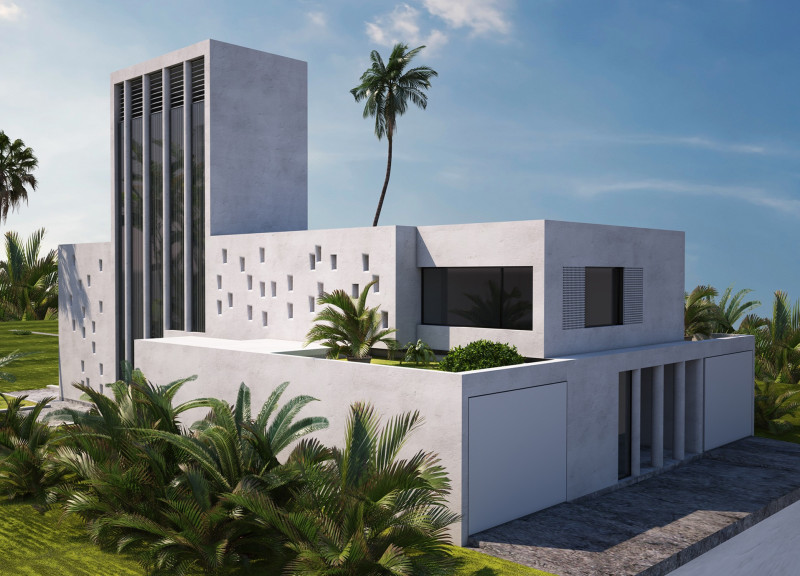5 key facts about this project
At its core, the project represents a harmonious blend of aesthetics and utility. Designed to serve a pivotal role within the community, it accommodates a variety of activities, suggesting an adaptability in its use. This flexibility in design is particularly significant in contemporary architecture, where mixed-use spaces and multifunctional areas are increasingly valued. The building’s design encourages interaction, fostering social engagement among its users and connecting them to the surrounding environment.
Important elements of the project include the layout and circulation paths that guide visitors throughout the space. The entrances are strategically placed to draw people in while framing inviting views of the main activity areas. Natural light plays a crucial role within the interiors, with large windows and open spaces enhancing the ambiance and supporting energy efficiency. The incorporation of sustainable practices, such as rainwater harvesting and solar energy utilization, demonstrates a commitment to environmental stewardship, allowing the project to serve as a model of responsible architecture.
The exterior materials chosen for the façade reflect a thoughtful consideration of the local context and climate. The use of concrete provides structural integrity while offering an industrial aesthetic. Coupled with elements of wood and glass, these materials create a balanced dialogue between durability and warmth. The design incorporates landscaping that integrates green spaces, enhancing the building's relationship with nature and promoting biodiversity in the urban setting. The thoughtful landscaping invites interactions outside, encouraging users to engage with their surroundings in a more meaningful way.
Unique design approaches are evident throughout the project, particularly in the manner in which the architecture responds to its environment. The shape of the building has been carefully sculpted to maximize views and minimize the ecological impact on the site. This attention to the topography and natural features demonstrates a keen awareness of site-specific design. Moreover, the architectural choices reflect a deep understanding of the cultural context, incorporating local materials and traditional design motifs that resonate with the community.
Elements such as shading devices and overhangs have been integrated to optimize energy performance while enhancing the building's visual appeal. The careful positioning of these elements not only reduces heat gain but also creates dynamic patterns of light and shadow within the interior spaces. This interplay is vital for creating an engaging atmosphere that evolves throughout the day, allowing occupants to experience the space in varying light conditions.
As one explores the architectural plans and sections, it becomes clear how the designers have prioritized function without sacrificing form. Each space has been crafted with the end-user in mind, ensuring that the layout promotes usability and accessibility. Common areas are designed to foster collaboration, while private zones offer necessary respite, striking a balance that accommodates a diverse range of activities.
This project encapsulates a modern approach to architecture that embraces sustainability, community, and context. The careful thought behind each design decision aligns with contemporary architectural practices that focus on holistic design principles. By analyzing the architectural designs and ideas within this project, one can gain a deeper appreciation for the intricate relationships between form, function, and environment.
For those interested in delving further into the specifics of this architectural endeavor, I encourage you to explore the various architectural plans, sections, and design illustrations. Each element contributes to a broader understanding of how this project successfully interweaves its design philosophy with practical outcomes, demonstrating how architecture can positively impact both individuals and the community at large.


























